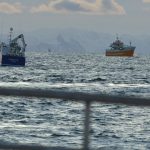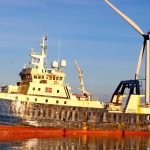According to a new economic report released by NOAA’s Fisheries Service U.S. commercial and recreational saltwater fishing generated more than $185 billion in sales and supported more than two million jobs in 2006. It is found that the commercial fishing industry, harvesters, seafood processors and dealers, seafood wholesalers and seafood retailers , generated $103 billion in sales, $44 billion in income and supported 1.5 million jobs in 2006.
Recreational fishing, on the other hand, has generated $82 billion in sales, $24 billion in income, and supported 534,000 jobs in 2006. Jim Balsiger, NOAA acting assistant administrator for NOAA’s Fisheries Service, told that the report documents clearly that managing fisheries sustainably is good for the environment and the economy. He further said that fishing helps create a substantial number of jobs around the nation.
The report states that the highest amount of sales generated by the commercial fishing industry were in California ($9.8 billion), Florida ($5.2 billion), Massachusetts ($4.4 billion), Washington ($3.8 billion), and Alaska ($3 billion). Most of the jobs were generated in California (179,000), Florida (103,000), Massachusetts (83,000), Washington (75,000) and Texas (47,000).
It is mentioned that saltwater recreational fishing has generated its highest economic effect in total sales and jobs generated in Florida ($7.6 billion sales, 131,000 jobs); Texas ($2.2 billion sales, 34,000 jobs); California ($1.9 billion sales, 23,000 jobs); North Carolina ($1.2 billion sales, 24,000 jobs); and Louisiana ($1.2 billion sales, 27,000 jobs).
It is no doubt that this report gives the public accessible economic information on fishing activities in the U.S., and is a companion to Fisheries of the United States, and the forthcoming Fishing Communities of the United States. It also provides a snapshot of fishery management plans, limited access privilege fishing programs (a type of catch share program), buyback programs, and ecolabeling programs, as well as the status of fish stocks and an inventory of protected marine resources.








